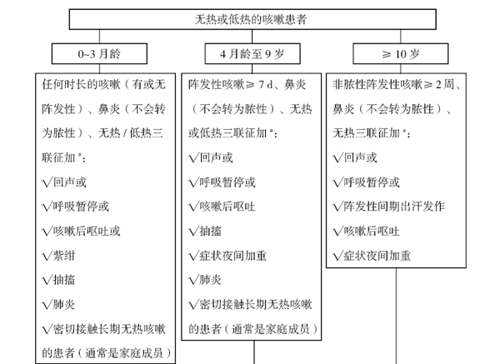 PDF(1630 KB)
PDF(1630 KB)


 PDF(1630 KB)
PDF(1630 KB)
 PDF(1630 KB)
PDF(1630 KB)
百日咳诊断:现行标准的局限性和GPI建议
Pertussis diagnosis: the limitation of the currently used criteria and the suggestion of Global Pertussis Initiative
现已认识到百日咳是一个影响全年龄段人群的疾病,现行不分年龄段的“一刀切”式的诊断标准存在明显局限性,不利于及时地开始个体治疗和阻断传播的工作。全球百日咳计划 (Global Pertussis Initiative,GPI)专家组于是拟定了新的百日咳诊断标准建议。该讲座结合相关研究,综合分析了现行标准的不足,并详细介绍了GPI提出的百日咳诊断建议。
It has been recognized that pertussis is a disease that affects all age groups. There are obvious limitations in the currently used diagnostic criteria with "one-size-fits-all" definition, which is not advantageous to start individual treatment and perform strategies for preventing the transmission. Therefore, the expert group of Global Pertussis Initiative gives a suggestion for the diagnosis of pertussis. Based on the related published studies, the present article analyzes the limitations of the current criteria, and introduces the GPI's suggestion in detail.

Pertussis / Diagnosis / Clinical manifestation / Laboratory detection
[1] Cherry JD, Tan T, Wirsing von König CH, et al. Clinical definitions of pertussis:Summary of a Global Pertussis Initiative roundtable meeting, February 2011[J]. Clin Infect Dis, 2012, 54(12):1756-1764.
[2] Forsyth KD, Wirsing von Konig CH, Tan T, et al. Prevention of pertussis:recommendations derived from the second Global Pertussis Initiative roundtable meeting[J]. Vaccine, 2007, 25(14):2634-2642.
[3] World Health Organization; Dept. of Vaccines and Biologicals. WHO-recommended standards for surveillance of selected vaccine-preventable diseases[EB/OL]. (February 2003). http://apps.who.int/iris/bitstream/10665/68334/1/WHO_V-B_03.01_eng.pdf.
[4] Centers for Disease Control and Prevention (CDC). Manual for the Surveillance of Vaccine-Preventable Diseases:Chapter 10:Pertussis[EB/OL]. (January 1, 2014). http://www.cdc.gov/vaccines/pubs/surv-manual/chpt10-pertussis.html#laboratory.
[5] Department of Health, Australian Government. Pertussis case definition[EB/OL]. (January 16, 2014). http://www.health.gov.au/internet/main/publishing.nsf/Content/cda-surveil-nndsscasedefs-cd_pertus.htm.
[6] 中华人民共和国卫生部. 百日咳诊断标准及处理原则[EB/OL]. (1995-12-15). http://www.moh.gov.cn/zwgkzt/s9491/201212/34026.shtml.
[7] 中华人民共和国卫生部. WS 274-2007百日咳诊断标准[EB/OL]. (2007-04-17). http://www.moh.gov.cn/zwgkzt/s9491/201410/52040bc16d3b4eecae56ec28b3358666.shtml.
[8] Nieves DJ, Heininger U. Bordetella pertussis[J]. Microbiol Spectr, 2016, 4(3). doi:10.1128/microbiolspec.EI10-0008-2015.
[9] Cherry JD. Epidemic pertussis in 2012-the resurgence of a vaccine-preventable disease[J]. N Engl J Med, 2012, 367(9):785-787.
[10] Cherry JD, Grimprel E, Guiso N, et al. Defining pertussis epidemiology:clinical, microbiologic and serologic perspectives[J]. Pediatr Infect Dis J, 2005, 24(5 Suppl):S25-S34.
[11] Koh MT, Liu CS, Chiu CH, et al. Under-recognized pertussis in adults from Asian countries:a cross-sectional seroprevalence study in Malaysia, Taiwan and Thailand[J]. Epidemiol Infect, 2016, 144(6):1192-1200.
[12] He H, Yao P, Zhou Y, et al. Is pertussis infection neglected in China? Evidence from a seroepidemiology survey in Zhejiang,an eastern province of China[J]. PLoS One, 2016, 11(5):e0155965.
[13] Chen Z, Zhang J, Cao L, et al. Seroprevalence of pertussis among adults in China where whole cell vaccines have been used for 50 years[J]. J Infect, 2016, 73(1):38-44.
[14] Mattoo S, Cherry JD. Molecular pathogenesis, epidemiology, and clinical manifestations of respiratory infections due to Bordetella pertussis and other Bordetella subspecies[J]. Clin Microbiol Rev, 2005, 18(2):326-382.
[15] Schmitt-Grohé S, Cherry JD, Heininger U, et al. Pertussis in German adults[J]. Clin Infect Dis, 1995, 21(4):860-866.
[16] Huygen K, Rodeghiero C, Govaerts D, et al. Bordetella pertussis seroprevalence in Belgian adults aged 20-39 years, 2012[J]. Epidemiol Infect, 2014, 142(4):724-728.
[17] Guiso N, Berbers G, Fry NK, et al. What to do and what not to do in serological diagnosis of pertussis:recommendations from EU reference laboratories[J]. Eur J Clin Microbiol Infect Dis, 2011, 30(3):307-312.
[18] Ghanaie RM, Karimi A, Sadeghi H, et al. Sensitivity and specificity of the World Health Organization pertussis clinical case definition[J]. Int J Infect Dis, 2010, 14(12):e1072-e1075.
[19] Strebel P, Nordin J, Edwards K, et al. Population-based incidence of pertussis among adolescents and adults, Minnesota, 1995-1996[J]. J Infect Dis, 2001, 183(9):1353-1359.
[20] Miyashita N, Akaike H, Teranishi H, et al. Diagnostic value of symptoms and laboratory data for pertussis in adolescent and adult patients[J]. BMC Infect Dis, 2013, 13:129.
[21] Nieves DJ, Singh J, Ashouri N, et al. Clinical and laboratory features of pertussis in infants at the onset of a California epidemic[J]. J Pediatr, 2011, 159(6):1044-1046.
[22] Shojaei J, Saffar M, Hashemi A, et al. Clinical and laboratory features of pertussis in hospitalized infants with confirmed versus probable pertussis cases[J]. Ann Med Health Sci Res, 2014, 4(6):910-914.
[23] Patriarca PA, Biellik RJ, Sanden G, et al. Sensitivity and specificity of clinical case definitions for pertussis[J]. Am J Public Health, 1988, 78(7):833-836.
[24] Stehr K, Cherry JD, Heininger U, et al. A comparative efficacy trial in Germany in infants who received either the Lederle/Takeda acellular pertussis component DTP (DTaP) vaccine, the Lederle whole-cell component DTP vaccine, or DT vaccine[J]. Pediatrics, 1998, 101(1 Pt 1):1-11.
北京市科委行业定额经费自主项目(2016-bjsekyjs-3)。